Are you ready for the 2025 customer that’s reinventing themself? CXM Today tracks the trends moving marketing teams and lays out the top 10 priorities for 2025, and how to action the dream.
New year, new you? The editorial team had its ear to the ground to help with future skills to focus on for the year. We have our top ten predictions for the year. Take a look at what the experts had to say about trends that will define 2025.
The Humble QR To Breaks Phygital Boundaries
The QR comeback is here because much like other marketing channels, it lets marketers measure outcomes.
In August 2024, YouTube Brandcast introduced branded QR codes in video ads and expanded YouTube TV’s sports content with locally televised WNBA games. These QR codes can be scanned by viewers during an ad to access additional content, promotional offers, or e-commerce platforms. Brands could easily gamify the customer journey leading users through a treasure hunt of deeper discounts.
Add UTM tracking before you generate your code. That way, you can ensure proper campaign attribution and collect more accurate usage data and performance reports.
It’s also diverse. For example, QR codes can be integrated into an augmented reality treasure hunt across multiple channels. Codes on packaging, ads and in-store displays unlock AR experiences, forming a gamified journey. Sivakasi is also manufacturing tapes with barcodes that can quickly be scanned from the tape.
It lets markets attribute creator or influencer campaigns and can be used in out-of-home ads, leading users to a mobile-optimised interactive map showing real-time product availability at nearby stores. Bringing virtual and IRL together, we think so!
 According to Ravi Pratap, Co-Founder and CTO, Uniqode, “Organisations will accelerate their use of QR codes for first-party data collection in physical spaces, transforming how brick-and-mortar businesses gather customer insights. This trend will be particularly prominent in retail, where businesses will use QR codes to collect real-time feedback, reviews and customer data directly from store locations. This approach offers higher relevance and response rates than traditional email outreach, as it captures customer input during their actual store experience rather than hours or days later.”
According to Ravi Pratap, Co-Founder and CTO, Uniqode, “Organisations will accelerate their use of QR codes for first-party data collection in physical spaces, transforming how brick-and-mortar businesses gather customer insights. This trend will be particularly prominent in retail, where businesses will use QR codes to collect real-time feedback, reviews and customer data directly from store locations. This approach offers higher relevance and response rates than traditional email outreach, as it captures customer input during their actual store experience rather than hours or days later.”
Live Commerce To Get Bigger with RMN
 Consumer preferences are shifting, with 80% of people favouring live videos from brands over blogs and 82% over other content. “To truly capitalise on the dynamic world of live commerce, brands must carefully choose content creators who align with their values and connect with their target audience on a deeper level,” says Dennis Wakabayashi, the Global Voice of CX.
Consumer preferences are shifting, with 80% of people favouring live videos from brands over blogs and 82% over other content. “To truly capitalise on the dynamic world of live commerce, brands must carefully choose content creators who align with their values and connect with their target audience on a deeper level,” says Dennis Wakabayashi, the Global Voice of CX.
 Anja Lambrecht, Professor of Marketing at London Business School, also highlights the benefits of a live commerce vertical – Shoppable TV. She says that the digitisation of TV and increased consumer interaction are also key drivers behind its growth.
Anja Lambrecht, Professor of Marketing at London Business School, also highlights the benefits of a live commerce vertical – Shoppable TV. She says that the digitisation of TV and increased consumer interaction are also key drivers behind its growth.
 Now, the integration of live commerce with Retail Media Networks (RMNs) will further enhance its impact, combining real-time engagement with data-driven advertising precision. According to Regina Ye, CEO and Co-Founder of Topsort, “Retailers and brands leveraging this synergy will unlock new levels of personalisation, enabling them to connect with consumers in moments that matter most, closer to the point of purchase.”
Now, the integration of live commerce with Retail Media Networks (RMNs) will further enhance its impact, combining real-time engagement with data-driven advertising precision. According to Regina Ye, CEO and Co-Founder of Topsort, “Retailers and brands leveraging this synergy will unlock new levels of personalisation, enabling them to connect with consumers in moments that matter most, closer to the point of purchase.”
 With UK ecommerce click-and-collect sales expected to surpass EUR 50 billion by 2026, live commerce could account for 20% of global ecommerce sales. Priya Patel-Chomel, Former Head of Product Marketing – Middle East, Turkey and Africa at Meta suggests that brands carefully consider the right platform by asking: Will it create a unique customer experience? Does it reach the right demographic? Is the platform equipped with seamless setup tools and proven success? Is it both affordable and effective?
With UK ecommerce click-and-collect sales expected to surpass EUR 50 billion by 2026, live commerce could account for 20% of global ecommerce sales. Priya Patel-Chomel, Former Head of Product Marketing – Middle East, Turkey and Africa at Meta suggests that brands carefully consider the right platform by asking: Will it create a unique customer experience? Does it reach the right demographic? Is the platform equipped with seamless setup tools and proven success? Is it both affordable and effective?
READ MORE: Meet CXM Today’s 2024 Advisory Board
Immersive or Annoyance – Experiences Leading Mobile App Marketing
Ads within apps are becoming interactive, visually rich, and seamlessly integrated into the user experience. AI fuels this transformation by analysing user behaviour, preferences, and real-time data to deliver hyper-personalised content that resonates. It’s a secure give-and-take as apps collect valuable insights that enable brands to offer relevant product recommendations at the perfect moment.
 “Mobile App Marketing will re-define user engagement with immersive ad experiences and AI-driven personalisation. Smart organisations will automate the right things in the right ways, but also find exciting ways to connect individuals to the brand. Make it personal, make it easy, and use automation to perform at scale,” says Nate Brown, Head of CX Advisory for Metric Sherpa, Co-Founder of CX Accelerator.
“Mobile App Marketing will re-define user engagement with immersive ad experiences and AI-driven personalisation. Smart organisations will automate the right things in the right ways, but also find exciting ways to connect individuals to the brand. Make it personal, make it easy, and use automation to perform at scale,” says Nate Brown, Head of CX Advisory for Metric Sherpa, Co-Founder of CX Accelerator.
 Machine learning algorithms continuously refine ad delivery, ensuring users see content that aligns with their interests and intent. This creates a more immersive, less intrusive experience that boosts conversions and brand affinity. Mahek Shah, Global Head of Media at AirAsia Move, highlights, “To measure in-app engagement and its correlation to ad performance, it’s imperative to track key metrics—CTR, CPA, and ROAS—while leveraging analytics tools and attribution models.”
Machine learning algorithms continuously refine ad delivery, ensuring users see content that aligns with their interests and intent. This creates a more immersive, less intrusive experience that boosts conversions and brand affinity. Mahek Shah, Global Head of Media at AirAsia Move, highlights, “To measure in-app engagement and its correlation to ad performance, it’s imperative to track key metrics—CTR, CPA, and ROAS—while leveraging analytics tools and attribution models.”
 Businesses that collaborate with the right partners into their growth strategies are positioned for sustained mobile app marketing success. “With sufficient commitment and prioritisation from both partners,” notes ZeMing Chan, Head Growth Innovation (APAC & EU) at foodpanda, “Apps can deliver mutual benefits, creating a powerful synergy that enhances visibility and fosters long-term growth.”
Businesses that collaborate with the right partners into their growth strategies are positioned for sustained mobile app marketing success. “With sufficient commitment and prioritisation from both partners,” notes ZeMing Chan, Head Growth Innovation (APAC & EU) at foodpanda, “Apps can deliver mutual benefits, creating a powerful synergy that enhances visibility and fosters long-term growth.”
AI for Frictionless UX Will Become The New Standard
AI is set to lead the charge in product creation, driving innovation in UX and design through automation, frictionless experiences, and dramatically reduced development time. A recent survey revealed that 48% of Product, Design, and Research professionals highlight speed as a key benefit of using AI, with additional benefits related to automation (30%) and efficiency/productivity gains (37%).
Emerging technologies such as gesture-based interfaces and zero UI are also eliminating traditional touchpoints. BMW’s Gesture Control system exemplifies this shift, enabling drivers to navigate menus with simple hand movements, while Samsung’s SmartThings ecosystem integrates voice, touch, and gesture interfaces to create seamless user interactions across smart devices.
AI is empowering designers to process vast amounts of data and optimise user interactions. This allows designers to focus more on creativity and strategic thinking. Another survey found that 92% of UX professionals use at least one generative AI tool to enhance their design processes.
 “While co-pilots help you do your job better, we need consequential AI that transforms how work gets done. When AI becomes the pilot, marketers evolve into air traffic controllers, overseeing thousands of AI-generated customer journeys rather than building individual campaigns,” says Amanda Cole, Chief Marketing Officer, Bloomreach.
“While co-pilots help you do your job better, we need consequential AI that transforms how work gets done. When AI becomes the pilot, marketers evolve into air traffic controllers, overseeing thousands of AI-generated customer journeys rather than building individual campaigns,” says Amanda Cole, Chief Marketing Officer, Bloomreach.
Growth Marketers Show Privacy-forward, First-party Signals
To harness first-party data’s full potential, businesses will move beyond data aggregation, AI layers and focus on goal-driven strategies.
 Brands will prefer first-party data-driven strategies with publisher-driven curation. “Curation empowers them to influence the value of their inventory directly. By placing privacy-forward, first-party signals at the core of programmatic transactions, publishers can showcase the richness of their data, driving increased demand and higher revenue,” says Chloe Grutchfield, VP of Products at Permutive.
Brands will prefer first-party data-driven strategies with publisher-driven curation. “Curation empowers them to influence the value of their inventory directly. By placing privacy-forward, first-party signals at the core of programmatic transactions, publishers can showcase the richness of their data, driving increased demand and higher revenue,” says Chloe Grutchfield, VP of Products at Permutive.
 As brands collect, curate and enhance their first-party data, the power of real-time data streaming is becoming hard to ignore. “Using Data Streaming Platforms, businesses can blend clickstream data with known customer profiles and spot patterns in their activity, enabling a “shift left” on data processing—getting smarter and faster with analytics right at the point of data generation,” adds Peter-Pugh Jones, Director of Strategic Accounts, Confluent.
As brands collect, curate and enhance their first-party data, the power of real-time data streaming is becoming hard to ignore. “Using Data Streaming Platforms, businesses can blend clickstream data with known customer profiles and spot patterns in their activity, enabling a “shift left” on data processing—getting smarter and faster with analytics right at the point of data generation,” adds Peter-Pugh Jones, Director of Strategic Accounts, Confluent.
AI further amplifies impact by identifying high-value audiences, automating personalised messaging, and predicting behaviours, ensuring every marketing decision is data-backed. GenAI can optimise audience targeting and campaign performance in real time, enhancing efficiency while preserving transparency and control.
 “The principle of transparency will be evident in privacy legislation as well as in the technical developments of PETs and AI. PETs will remain at the forefront of innovations in privacy protection,” adds Emilie Kuijt, DPO at AppsFlyer.
“The principle of transparency will be evident in privacy legislation as well as in the technical developments of PETs and AI. PETs will remain at the forefront of innovations in privacy protection,” adds Emilie Kuijt, DPO at AppsFlyer.
Self-Service that’s Natural and Intuitive For The Win
Self-service has been woven into the fabric of daily life for consumers — , 84% of Americans like using self-service kiosks, and 66% would choose kiosks over a human-run checkout, according to a 2024 survey by PlayUSA. This is non-negotiable, be it at the supermarket, quick-service restaurant (QSR), bank, museum or sports arena. Whether this self-service is delivered via kiosks or chatbot, it allows consumers to avoid long checkout lines, and wait time with overburdened support teams.
For businesses, it helps speed up purchases and cuts costs.
They are moving towards tools that excel at understanding customer intent and delivering responses that feel natural and intuitive, ensuring smoother and more engaging interactions.
 According to Guillaume Laporte, Chief AI Officer of Foundever, “Brands can enhance customer interactions by training Generative AI models on their historical conversation data, using techniques like fine-tuning or RAG (retrieval augmented generation). This allows the AI model to understand common queries and generate more accurate and contextually relevant responses. Continuous learning from ongoing interactions ensures the AI model adapts to evolving customer needs.”
According to Guillaume Laporte, Chief AI Officer of Foundever, “Brands can enhance customer interactions by training Generative AI models on their historical conversation data, using techniques like fine-tuning or RAG (retrieval augmented generation). This allows the AI model to understand common queries and generate more accurate and contextually relevant responses. Continuous learning from ongoing interactions ensures the AI model adapts to evolving customer needs.”
Search to Shift from Optimisation to Anticipation
The way consumers look for information is fundamentally changing. For example, search and social media are converging. SOCi’s 2024 Consumer Behavior Index highlights this shift: 67% of 18- —to 24-year-olds use Instagram to search for local businesses, while 62% turn to TikTok. Multimodal was a big one in 2024, with AI playing a significant role in processing image and video data to produce search results.
 Voice search surged in 2024. According to Google data, 27% of people use voice search on mobile globally. This means SEO must now consider voice search optimisation. As per Jonathan Moran, Head of MarTech Solutions Marketing, SAS, “The ability for businesses to localise (according to region or dialect) and optimise (according to indexed content, past interactions, other individualised information) search results using Natural Language Processing will be key to delivering an ideal search experience – particularly as AI enabled chat and search interfaces emerge. Being able to quickly ingest, process, reply to, and contextualise consumer input in a visually intuitive interface using NLP/NLU/NLG – with speed and performance in mind – will allow brands to drive consumer loyalty and trust.”
Voice search surged in 2024. According to Google data, 27% of people use voice search on mobile globally. This means SEO must now consider voice search optimisation. As per Jonathan Moran, Head of MarTech Solutions Marketing, SAS, “The ability for businesses to localise (according to region or dialect) and optimise (according to indexed content, past interactions, other individualised information) search results using Natural Language Processing will be key to delivering an ideal search experience – particularly as AI enabled chat and search interfaces emerge. Being able to quickly ingest, process, reply to, and contextualise consumer input in a visually intuitive interface using NLP/NLU/NLG – with speed and performance in mind – will allow brands to drive consumer loyalty and trust.”
But the biggest move has been using artificial intelligence to contextually understand intent rather than matching keywords in search queries.
 According to Ruchika Batra, Director – Content & SEO, birdeye.com, “Mobile-first indexing will continue to redefine the digital landscape in 2025, with advanced mobile SEO strategies shifting from optimisation to anticipation. The most successful strategies will leverage AI-powered insights and adaptive technologies to deliver hyper-personalised, real-time experiences. Businesses that prioritise speed, user intent, and seamless mobile journeys will not only stay competitive but set the standard in a mobile-dominated world.”
According to Ruchika Batra, Director – Content & SEO, birdeye.com, “Mobile-first indexing will continue to redefine the digital landscape in 2025, with advanced mobile SEO strategies shifting from optimisation to anticipation. The most successful strategies will leverage AI-powered insights and adaptive technologies to deliver hyper-personalised, real-time experiences. Businesses that prioritise speed, user intent, and seamless mobile journeys will not only stay competitive but set the standard in a mobile-dominated world.”
There is a larger question looming – will generative AI tools replace Google as a primary search engine, and how can marketers optimise for such a reality?
READ MORE: Top 10 Interviews of 2024
Be Strategic About Channel Agnosticism
As the lines blur, one debate in the marketing world is how to be message-sure and customer-centric without being channel-first. The argument is that marketers must be both media-agnostic and channel-agnostic, and the customer has to be at the centre of that Venn diagram.
A channel-agnostic approach is inherently flexible; it doesn’t mean being unfocused. It allows you to adjust your strategy as new data comes in and as the marketing environment changes. This includes, if a new platform starts gaining traction within your target audience, and being ready to explore that opportunity without being tied down by existing commitments to other channels.
According to Nate Brown, Head of CX Advisory for Metric Sherpa, Co-Founder of CX Accelerator, “The continued explosion of short-form video cannot be ignored, and has a critical place in every brand marketing strategy. BUT it’s not the end all be all. Consider the growth of forum channels such as Reddit and community channels such as discord. The rules really have not changed, only the implementation…
1) Have compelling, unique, and varied content that brings your brand to life.
2) Be present in the right places in the right ways to earn the attention of the audience that belongs to you!
Accomplishing this will require courageous marketers who can explore new outlets and quickly determine their effectiveness.”
Retail Media Network Catch Consumers in a Shopping Mindset
McKinsey predicts that ad spends on retail media networks will grow to $100B by 2026, or roughly double. Further, GroupM estimates that RMN spending growth will well surpass total digital advertising through 2027.
 According to Alin Dobrea, Marketing Director at ZALORA Group in Singapore, “Looking ahead to 2025, a top marketing priority for me is to elevate our retail media strategies to create seamless, full-funnel customer experiences. Retail media is rapidly evolving from being primarily a performance marketing channel to becoming a comprehensive solution that leverages first-party data across multiple touchpoints.
According to Alin Dobrea, Marketing Director at ZALORA Group in Singapore, “Looking ahead to 2025, a top marketing priority for me is to elevate our retail media strategies to create seamless, full-funnel customer experiences. Retail media is rapidly evolving from being primarily a performance marketing channel to becoming a comprehensive solution that leverages first-party data across multiple touchpoints.
My focus will be on integrating both on-site and off-site campaigns, utilising display and video assets to engage customers effectively during their shopping journey. By embracing continuous testing and innovation, we’ll explore new retail media formats and ad placements to enhance customer engagement and support our brand partners.
Ultimately, my goal is to make retail media more accessible and efficient, driving innovation and growth in the industry while delivering personalised and meaningful experiences to our customers.”
Rethink Self-Checkout with Video Surveillance
Several supermarkets jumped onto the automated checkout system during the pandemic to limit exposure to other customers, and reduce staff requirements.
- Sainsbury’s has a scan-and-go technology called SmartShop that allows customers to scan products and bag them using their mobile device.
- Tesco has a checkout-free store called GetGo in London, Birmingham, and Welwyn Garden City. Customers can enter the store using a QR code, walk through aisles with sensors and cameras, and then pay without using a checkout or scanning a product.
- Asda has mobile scan and go available in almost all of its stores.
- Aldi has a checkout-free supermarket called Shop&Go in Greenwich, London. Aldi also uses face recognition technology to confirm the age of customers buying age-restricted items.
Yet some had to rollback their ambitious plans because of inventory loss and other challenges. All is not lost.
Żabka Nano stores, located in Poland, are placed at city centres, universities, large-format stores, and railway and underground stations. The technology behind the autonomous stores is from Aifi Inc., a Microsoft for Startups partner. Aifi has the largest computer vision based autonomous store implementation in the world, with locations in Europe, the US, Asia, and Australia.
While supermarkets are still figuring this one out, could it be the opportunity to truly deliver seamless in-store and online service? Are we finally going to see blurred lines between physical and virtual? And if so, can marketers expect to get more data from in-store that lead to actionable customer insights?









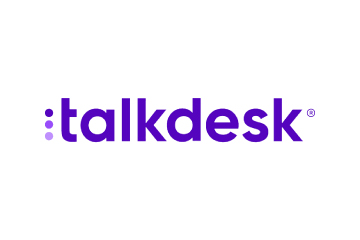








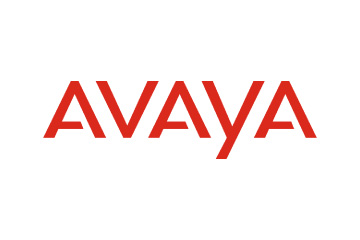
 Amplitude is a product analytics platform, enabling businesses to track visitors with the help of collaborative analytics. The platform leverages the capabilities of
Amplitude is a product analytics platform, enabling businesses to track visitors with the help of collaborative analytics. The platform leverages the capabilities of 




 Zoho Social, a part of Zoho’s suite of 50+ products, is a comprehensive social media management platform for businesses and agencies. The Zoho Social dashboard includes a robust set of features, such as Publishing Calendar, Bulk Scheduler, and Approval Management to offer businesses all the essential social media publishing tools. Its monitoring tools help enterprises track and respond to relevant social conversations.
Zoho Social, a part of Zoho’s suite of 50+ products, is a comprehensive social media management platform for businesses and agencies. The Zoho Social dashboard includes a robust set of features, such as Publishing Calendar, Bulk Scheduler, and Approval Management to offer businesses all the essential social media publishing tools. Its monitoring tools help enterprises track and respond to relevant social conversations.

 Microsoft Dynamics 365 represents a robust cloud-based CRM solution with features such as pipeline assessment, relationship analytics, and conversational intelligence. It utilises AI-powered insights to provide actionable intelligence via predictive analytics, lead scoring, sentiment analysis, etc. Currently, Microsoft operates in 190 countries and is made up of more than 220,000 employees worldwide.
Microsoft Dynamics 365 represents a robust cloud-based CRM solution with features such as pipeline assessment, relationship analytics, and conversational intelligence. It utilises AI-powered insights to provide actionable intelligence via predictive analytics, lead scoring, sentiment analysis, etc. Currently, Microsoft operates in 190 countries and is made up of more than 220,000 employees worldwide.

 HubSpot is an inbound marketing, sales, and customer service software provider, offering robust CRM and automation solutions. Some of its products include Marketing Hub, Sales Hub, Operations Hub, Content Hub, Commerce Hub, Marketing Analytics and Dashboard Software. Guided by its inbound methodology, HubSpot enables companies to prioritise innovation and customer success.
HubSpot is an inbound marketing, sales, and customer service software provider, offering robust CRM and automation solutions. Some of its products include Marketing Hub, Sales Hub, Operations Hub, Content Hub, Commerce Hub, Marketing Analytics and Dashboard Software. Guided by its inbound methodology, HubSpot enables companies to prioritise innovation and customer success.
 Monday.com is a project management software company, offering a cloud-based platform that enables businesses
Monday.com is a project management software company, offering a cloud-based platform that enables businesses  Headquartered in San Mateo, California, Freshworks is a global AI-powered business software provider. Its tech stack includes a scalable and comprehensive suite for IT, customer support, sales, and marketing teams, ensuring value for immediate business impact. Its product portfolio includes Customer Service Suite, Freshdesk, Freshchat, Freshcaller, Freshsuccess, and Freshservice. Freshservice for Business Teams has helped several global organisations to enhance their operational efficiency.
Headquartered in San Mateo, California, Freshworks is a global AI-powered business software provider. Its tech stack includes a scalable and comprehensive suite for IT, customer support, sales, and marketing teams, ensuring value for immediate business impact. Its product portfolio includes Customer Service Suite, Freshdesk, Freshchat, Freshcaller, Freshsuccess, and Freshservice. Freshservice for Business Teams has helped several global organisations to enhance their operational efficiency.
 Talkdesk offers an innovative AI-powered customer-centric tech stack to its global partners. The company provides generative AI integrations, delivering industry-specific solutions to its customers. Talkdesk CX Cloud and Industry Experience Clouds utilise modern machine learning and language models to enhance contact centre efficiency and client satisfaction.
Talkdesk offers an innovative AI-powered customer-centric tech stack to its global partners. The company provides generative AI integrations, delivering industry-specific solutions to its customers. Talkdesk CX Cloud and Industry Experience Clouds utilise modern machine learning and language models to enhance contact centre efficiency and client satisfaction.




 The company offers comprehensive cloud-based solutions, such as Microsoft Dynamics 365, Gaming Consoles, Microsoft Advertising, Copilot, among other things, to help organisations offer enhanced CX and ROI. Its generative-AI-powered speech and voice recognition solutions,such as Cortana and Azure Speech Services empowers developers to build intelligent applications.
The company offers comprehensive cloud-based solutions, such as Microsoft Dynamics 365, Gaming Consoles, Microsoft Advertising, Copilot, among other things, to help organisations offer enhanced CX and ROI. Its generative-AI-powered speech and voice recognition solutions,such as Cortana and Azure Speech Services empowers developers to build intelligent applications.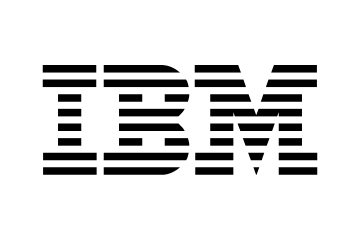 IBM is a global hybrid cloud and AI-powered
IBM is a global hybrid cloud and AI-powered  Uniphore is an enterprise-class, AI-native company that was incubated in 2008. Its enterprise-class multimodal AI and data platform unifies all elements of voice, video, text and data by leveraging Generative AI, Knowledge AI, Emotion AI and workflow automation. Some of its products include U-Self Serve, U-Assist, U-Capture, and U-Analyze. Its Q for Sale is a conversational intelligence software that guides revenue teams with AI-powered insights, offering clarity on how to effectively keep prospects engaged.
Uniphore is an enterprise-class, AI-native company that was incubated in 2008. Its enterprise-class multimodal AI and data platform unifies all elements of voice, video, text and data by leveraging Generative AI, Knowledge AI, Emotion AI and workflow automation. Some of its products include U-Self Serve, U-Assist, U-Capture, and U-Analyze. Its Q for Sale is a conversational intelligence software that guides revenue teams with AI-powered insights, offering clarity on how to effectively keep prospects engaged. Google Cloud accelerates every organisation’s ability to digitally transform its business. Its enterprise-grade solutions leverage modern technology to solve the most criticial business problems
Google Cloud accelerates every organisation’s ability to digitally transform its business. Its enterprise-grade solutions leverage modern technology to solve the most criticial business problems  8×8 offers out-of-the-box contact centre solutions, assisting all-size businesses to efficiently meet customer needs and preferences. It offers custom CRM integrations support and integrates effortlessly with third-party CRMs like Salesforce, Microsoft Dynamics, Zendesk, and more. Offering global support in all time zones & development teams in 5 continents, its patented geo-routing solution ensures consistent voice quality.
8×8 offers out-of-the-box contact centre solutions, assisting all-size businesses to efficiently meet customer needs and preferences. It offers custom CRM integrations support and integrates effortlessly with third-party CRMs like Salesforce, Microsoft Dynamics, Zendesk, and more. Offering global support in all time zones & development teams in 5 continents, its patented geo-routing solution ensures consistent voice quality. Sprinklr is a comprehensive enterprise software company for all customer-focused functions. With advanced AI, Sprinklr’s unified customer experience management (Unified-CXM) platform lets organisations offer human experiences to every customer, every time, across any modern channel.
Sprinklr is a comprehensive enterprise software company for all customer-focused functions. With advanced AI, Sprinklr’s unified customer experience management (Unified-CXM) platform lets organisations offer human experiences to every customer, every time, across any modern channel.


 Upland offers a comprehensive suite of contact centre and customer service solutions with products including InGenius, Panviva, Rant & Rave, and RightAnswers. InGenius enables organisations to connect their existing phone system with CRM, further enhancing agent productivity. Panviva provides compliant and omnichannel capabilities for highly regulated industries. Whereas, Rant & Rave, and RightAnswers are its AI-powered solutions,
Upland offers a comprehensive suite of contact centre and customer service solutions with products including InGenius, Panviva, Rant & Rave, and RightAnswers. InGenius enables organisations to connect their existing phone system with CRM, further enhancing agent productivity. Panviva provides compliant and omnichannel capabilities for highly regulated industries. Whereas, Rant & Rave, and RightAnswers are its AI-powered solutions, 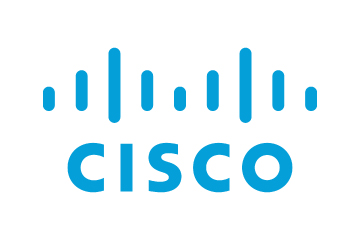


 Hootsuite, headquartered in Vancouver, is a social media management platform that streamlines the process of managing multiple social media accounts. Some of its core offerings include social media content planning and publishing, audience engagement tools, analytics and social advertising. Its easy-to-integrate capabilities help marketing teams to schedule and publish social media posts efficiently.
Hootsuite, headquartered in Vancouver, is a social media management platform that streamlines the process of managing multiple social media accounts. Some of its core offerings include social media content planning and publishing, audience engagement tools, analytics and social advertising. Its easy-to-integrate capabilities help marketing teams to schedule and publish social media posts efficiently.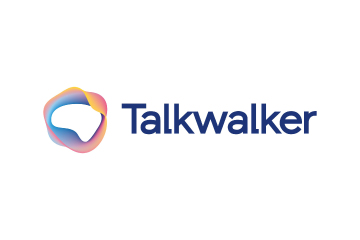

 Brandwatch enables businesses to build and scale the optimal strategy for their clients with intuitive, use-case-focused tools that are easy and quick to master. Bringing together consumer intelligence and social media management, the company helps its users react to the trends that matter, collaborate on data-driven content, shield the brand from threats and manage all the social media channels at scale.
Brandwatch enables businesses to build and scale the optimal strategy for their clients with intuitive, use-case-focused tools that are easy and quick to master. Bringing together consumer intelligence and social media management, the company helps its users react to the trends that matter, collaborate on data-driven content, shield the brand from threats and manage all the social media channels at scale.


 Adobe Experience Cloud offers a comprehensive set of applications, capabilities, and services specifically designed to address day-to-day requirement for personalised customer experiences at scale. Its platform helps play an essential role in managing different digital content or assets to improve customer happiness. Its easy-to-optimise content gives users appropriate marketing streams, ensuring product awareness.
Adobe Experience Cloud offers a comprehensive set of applications, capabilities, and services specifically designed to address day-to-day requirement for personalised customer experiences at scale. Its platform helps play an essential role in managing different digital content or assets to improve customer happiness. Its easy-to-optimise content gives users appropriate marketing streams, ensuring product awareness. Salesforce-owned Tableau is an AI-powered analytics and business intelligence platform, offering the breadth and depth of capabilities that serve the requirements of global enterprises in a seamless, integrated experience. Marketers can utilise generative AI models, AI-powered predictions, natural language querying, and recommendationsons.
Salesforce-owned Tableau is an AI-powered analytics and business intelligence platform, offering the breadth and depth of capabilities that serve the requirements of global enterprises in a seamless, integrated experience. Marketers can utilise generative AI models, AI-powered predictions, natural language querying, and recommendationsons. Contentsquare is a cloud-based digital experience analytics platform, helping brands track billions of digital interactions, and turn those digital
Contentsquare is a cloud-based digital experience analytics platform, helping brands track billions of digital interactions, and turn those digital 


 Zoho Corporation offers innovative and tailored software to help leaders grow their business. Zoho’s 55+ products aid sales and marketing, support and collaboration, finance, and recruitment requirements. Its customer analytics capabilities come with a conversational feature, Ask Zia. It enables users to ask questions and get insights in the form of reports and widgets in real-time.
Zoho Corporation offers innovative and tailored software to help leaders grow their business. Zoho’s 55+ products aid sales and marketing, support and collaboration, finance, and recruitment requirements. Its customer analytics capabilities come with a conversational feature, Ask Zia. It enables users to ask questions and get insights in the form of reports and widgets in real-time. Fullstory is a behavioural data platform, helping C-suite leaders make informed decisions by injecting digital behavioural data into its analytics stack. Its patented technology uncovers the power of quality behavioural data at scale, transforming every digital visit into actionable insights. Enterprises can increase funnel conversion and identify their highest-value customers effortlessly.
Fullstory is a behavioural data platform, helping C-suite leaders make informed decisions by injecting digital behavioural data into its analytics stack. Its patented technology uncovers the power of quality behavioural data at scale, transforming every digital visit into actionable insights. Enterprises can increase funnel conversion and identify their highest-value customers effortlessly.

 Started in 2005 in a Sweden-based small town, Norrköping, Voyado offers a customer experience cloud platform that includes a customer loyalty management system. This platform helps businesses design and implement customer loyalty programs, track customer
Started in 2005 in a Sweden-based small town, Norrköping, Voyado offers a customer experience cloud platform that includes a customer loyalty management system. This platform helps businesses design and implement customer loyalty programs, track customer 



 TapMango provides a comprehensive, customisable, flexible and feature-rich customer loyalty program. The loyalty tools include an integrated suite of customised consumer-facing technology, easy-to-use merchant tools, and automation algorithms, all aimed at enhancing customer experience. Adaptable to any industry, TapMango’s platform helps merchants compete with larger chains, converting customer one-time purchases into profitable spending habits.
TapMango provides a comprehensive, customisable, flexible and feature-rich customer loyalty program. The loyalty tools include an integrated suite of customised consumer-facing technology, easy-to-use merchant tools, and automation algorithms, all aimed at enhancing customer experience. Adaptable to any industry, TapMango’s platform helps merchants compete with larger chains, converting customer one-time purchases into profitable spending habits.




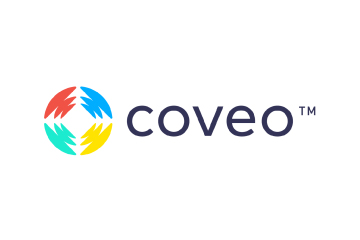

 Adobe Experience Cloud offers a comprehensive set of applications, capabilities, and services specifically designed to address day-to-day requirements for personalised customer experiences at scale. Its innovative platform has played an essential role in managing different digital content or assets, to improve customer happiness or satisfaction. Some of its products include Adobe Gen Studio, Experience Manager Sites, Real-time CDP, and Marketo Engage.
Adobe Experience Cloud offers a comprehensive set of applications, capabilities, and services specifically designed to address day-to-day requirements for personalised customer experiences at scale. Its innovative platform has played an essential role in managing different digital content or assets, to improve customer happiness or satisfaction. Some of its products include Adobe Gen Studio, Experience Manager Sites, Real-time CDP, and Marketo Engage.

